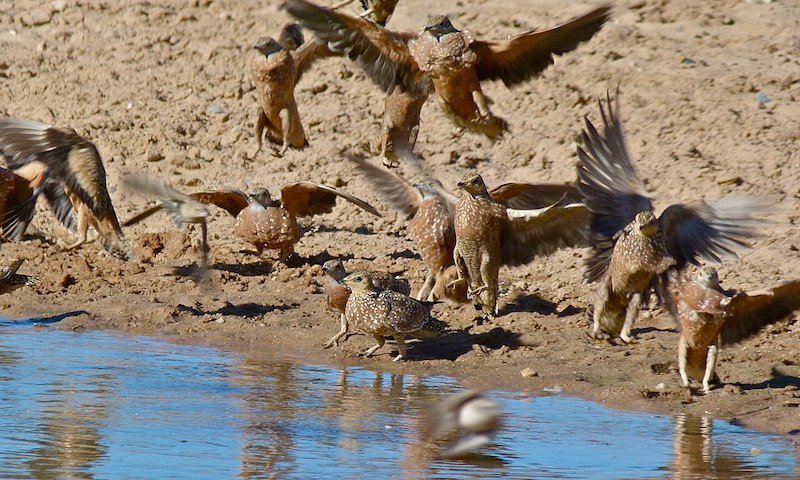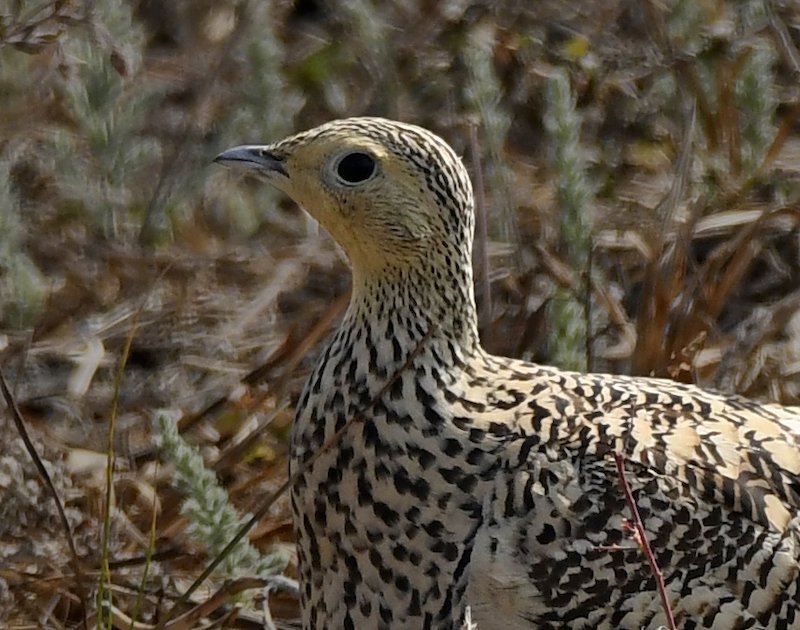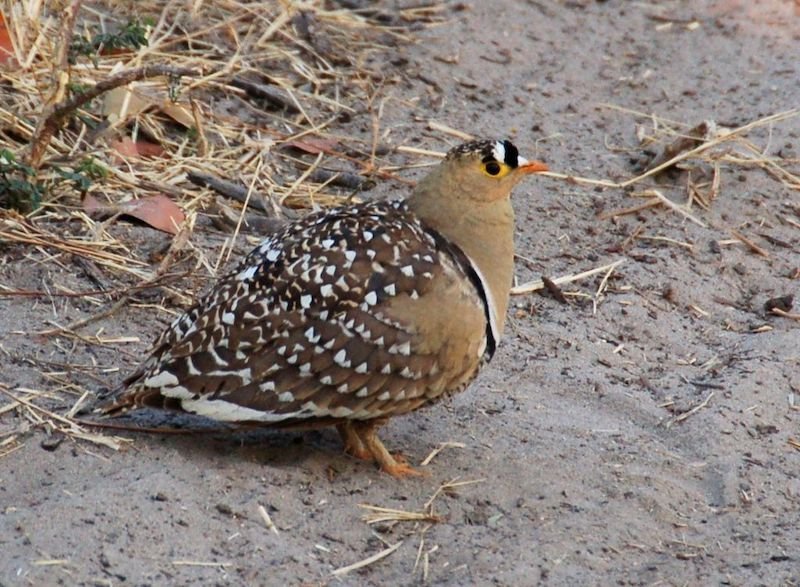A Seed-Eating Machine
Photo by Dhaval Vargiya on Unsplash
Pteroclidae
by Inspector Barry Mins on September 12, 2023Hey kids, welcome back to our series on the mysteries of created kinds. Last week, we got to meet some adorable little primates. This week, we go from mammals to birds and meet a small group of ground-dwelling birds.

This week’s kind is found throughout Africa, Southern Europe, and the near eastern parts of Asia, with a few species found outside that range, mostly in China. Many live in very warm environments and must thermoregulate carefully in order to survive.1 They largely prefer flat plains in warm, arid climates.2 Some species will also use agricultural fields as their homes.3 They are largely herbivorous, meaning they eat seeds from weeds.4
Members of this kind have babies relatively slowly for birds. On average, they lay somewhere between two and three eggs, of which, roughly two-thirds hatch.5 They tend to build their nests in cover, either from rocks or other forms of natural cover.6 Eggs are often camouflaged to match the background.
Has anyone figured it out yet? This week’s kind is the Pteroclidae—the Sandgrouse kind. There are close to 100 birds in these flocks, and they often have some colorful feathers on their neck and head. Stay tuned for next week when we meet a colorful group of songbirds.
Try out this fun word search!
Clue
Your clue for the week is:
There are three genera in this kind, they are found exclusively in Africa, and they have a stout body.
Ask a Question
Have you ever had a question about created kinds but didn’t know who to ask? Have you ever wanted to learn more about your favorite kind? Well, now you can! You can ask me, Inspector Barry Mins, a question! Have your parents help you fill out this form, and you might get your question answered in my column! If you have any questions about created kinds, feel free to send them my way!
Footnotes
- Andrew McKechnie, Ben Smit, Maxine Whitfield, Matthew Noakes, William Talbot, Mateo Garcia, Alexander Gerson, and Blair Wolf, “Avian Thermoregulation in the Heat: Evaporative Cooling Capacity in an Archetypal Desert Specialist, Burchell’s Sandgrouse (Pterocles burchelli),” Journal of Experimental Biology 219, no. 14 (July 2016): 2137–2144, https://journals.biologists.com/jeb/article/219/14/2137/15390.
- P. Acebes, J. Traba, J. Malo, J. García, E. Carriles, M. Radi, and M. Znari, “Habitat Selection and Partitioning of the Black-Bellied Sandgrouse (Pterocles orientalis), the Stone Curlew (Burhinus oedicnemus) and Cream-Coloured Courser (Cursorius cursor) in Arid Areas of North Africa,” Journal of Arid Environments 94 (July 2013): 10–17, https://doi.org/10.1016/j.jaridenv.2013.02.007.
- Ana Cardoso, Ana Poeiras, and Carlos Carrapto, “Factors Responsible for the Presence and Distribution of Black-Bellied Sandgrouse Pterocles orientalis in the Nature Park ‘Vale do Guadiana,’” Ardeola 54, no. 2 (2007): 205–215, https://www.ardeola.org/uploads/articles/docs/1318.pdf.
- Warwick Tarboton, Sheila Blane, and Penn Lloyd, “The Biology of the Yellowthroated Sandgrouse Pterocles gutturalis in a South African Agricultural Landscape,” Ostrich: Journal of African Ornithology 70, no. 3–4 (December 1999): 214–219,https://www.researchgate.net/profile/Penn-Lloyd/publication/241723438_The_biology_of_the_Yellowthroated_Sandgrouse_Pterocles_gutturalis_in_a_South_African_agricultural_landscape/links/57f6d69408ae91deaa5ed260/The-biology-of-the-Yellowthroated-Sandgrouse-Pterocles-gutturalis-in-a-South-African-agricultural-landscape.pdf.
- Mohammed Znari, Mohamed Aourir, Mohamed Radi, and Jean-Michel Melin, “Breeding Biology of the Black-Bellied Sandgrouse Pterocles orientalis in West-Central Morocco,” Ostrich: Journal of African Ornithology 79, no. 1 (2008): 53–60, https://doi.org/10.2989/OSTRICH.2008.79.1.6.363.
- Saâd Hanane, Kamilia Farhi, Farid Mezerdi, Asma Kahli, and Mohamed Dhaya El Hak Khemis, “Disentangling the Drivers of Black-Bellied Sandgrouse Pterocles orientalis Nesting Habitat Use in a Mediterranean Arid Environment,” Bird Study 66, no. 4 (2019): 452–460, https://www.tandfonline.com/doi/pdf/10.1080/00063657.2020.1724874.
- © 2024 Answers in Genesis
- Privacy Policy
- Contact
- About




